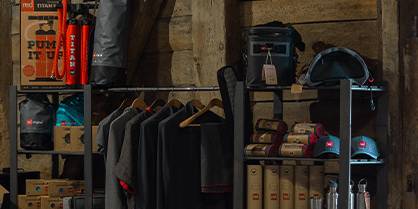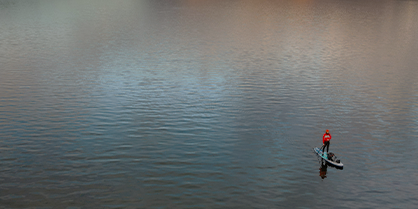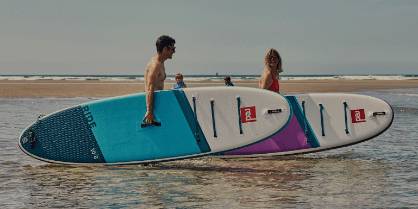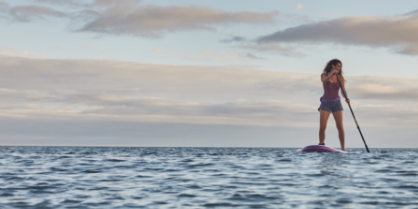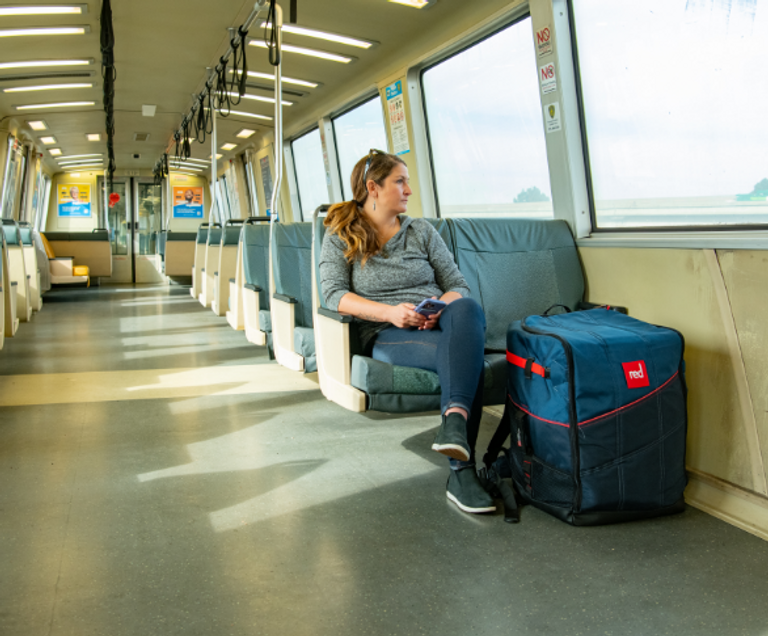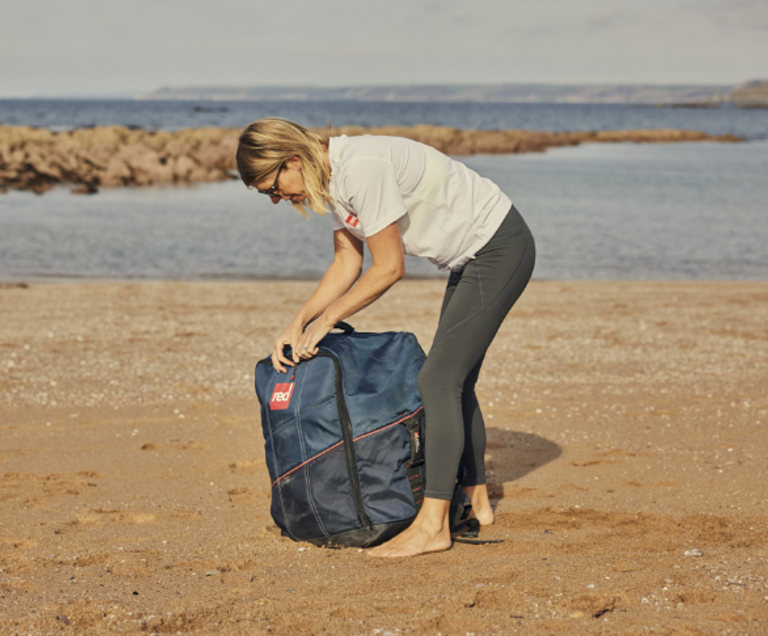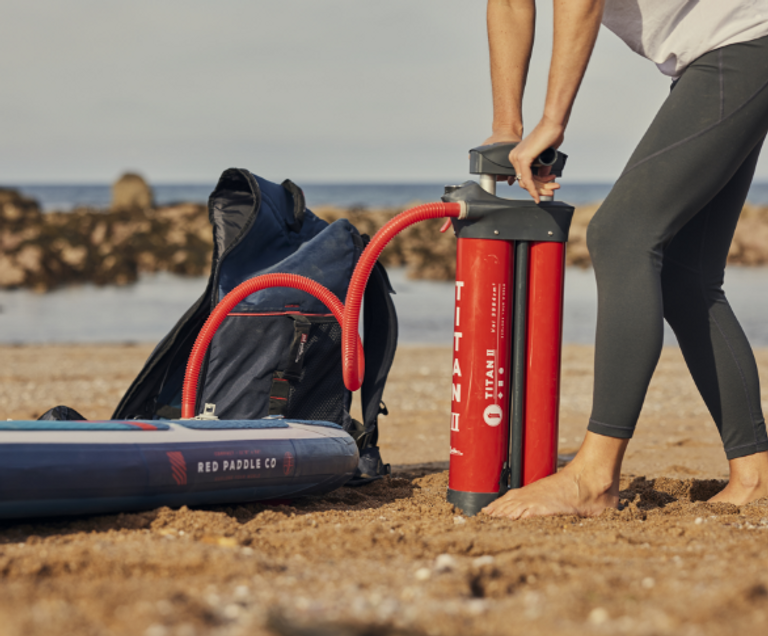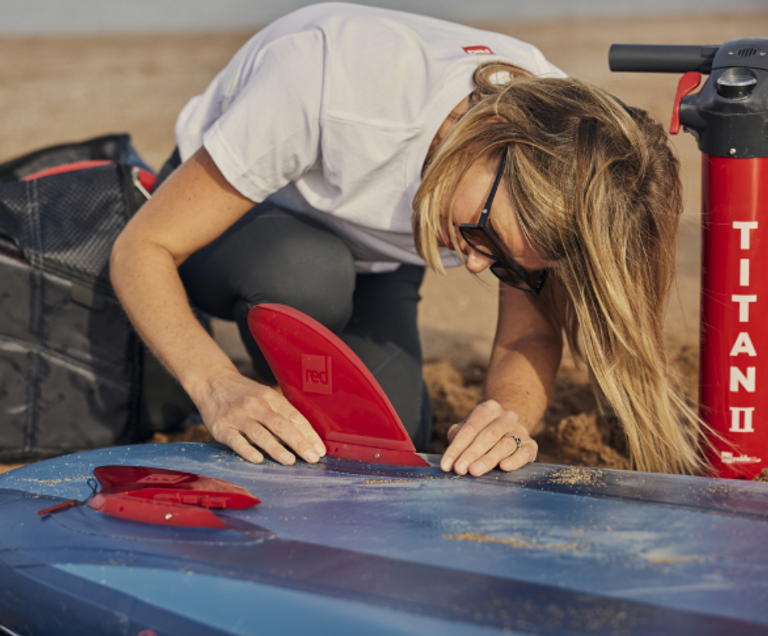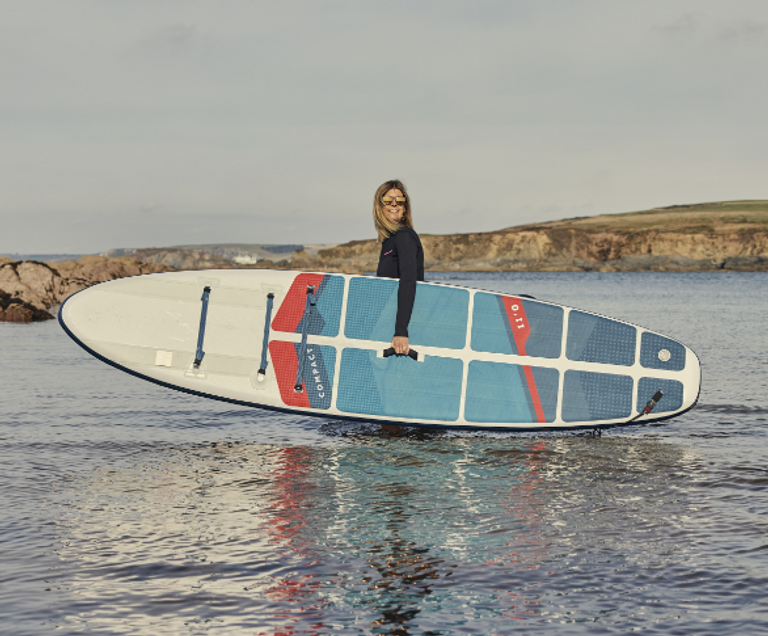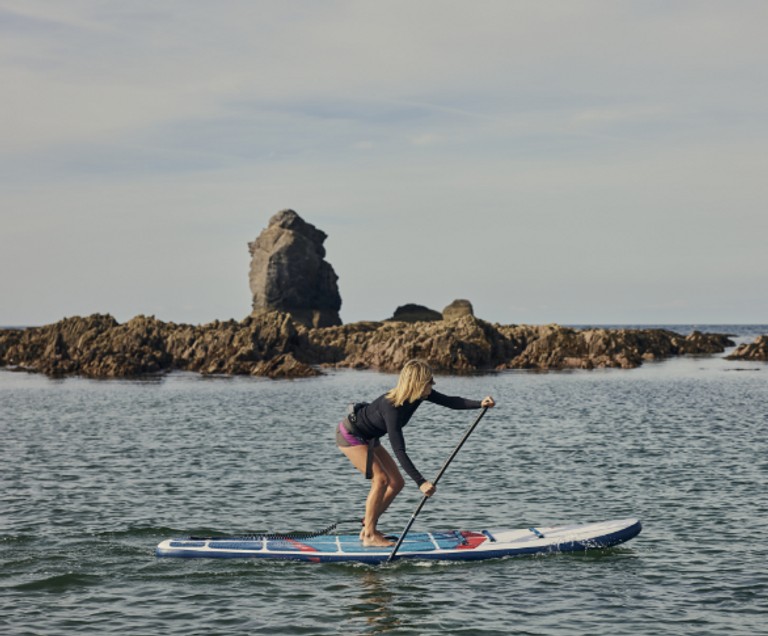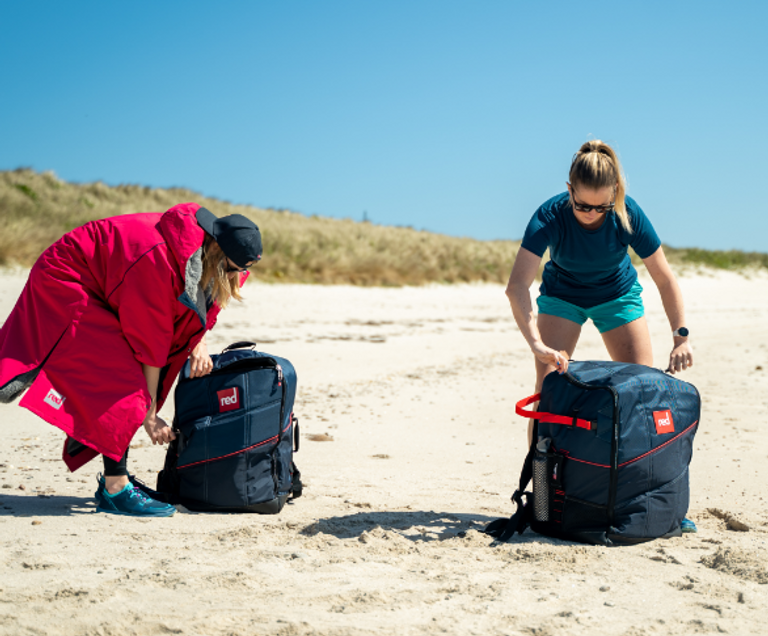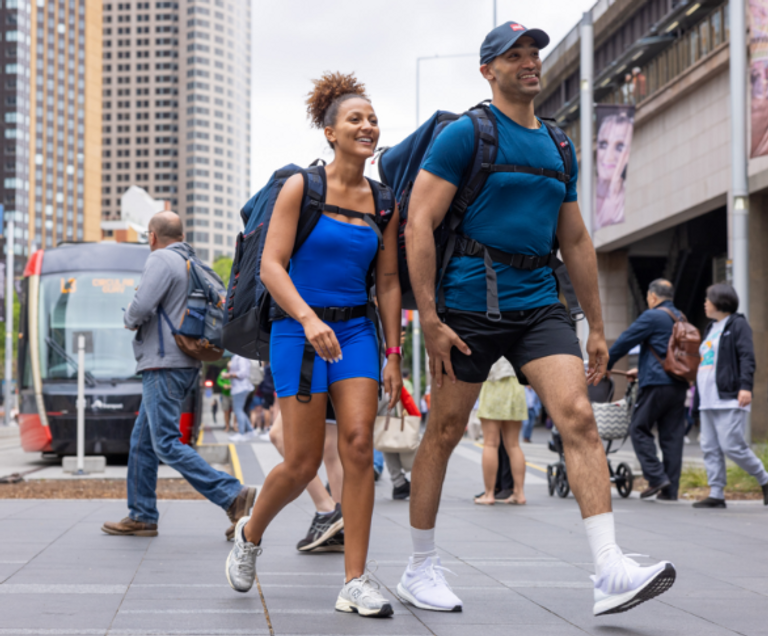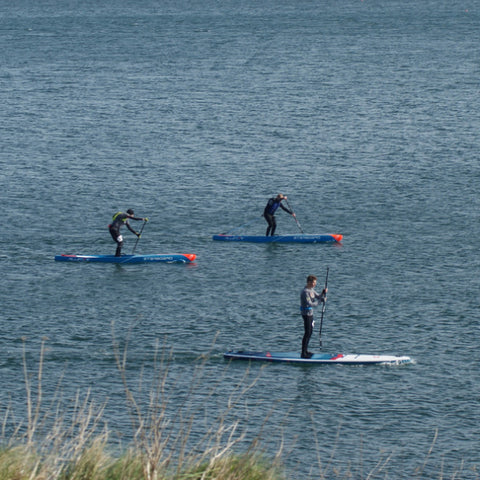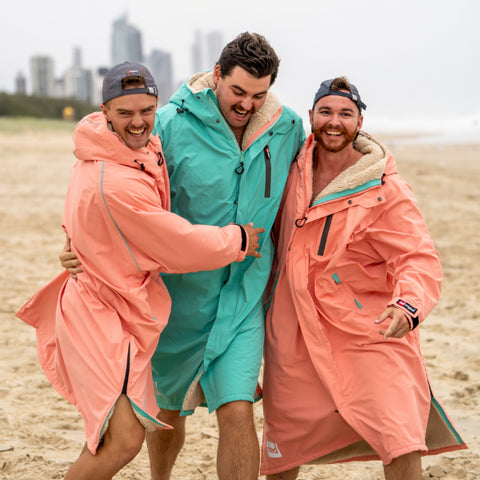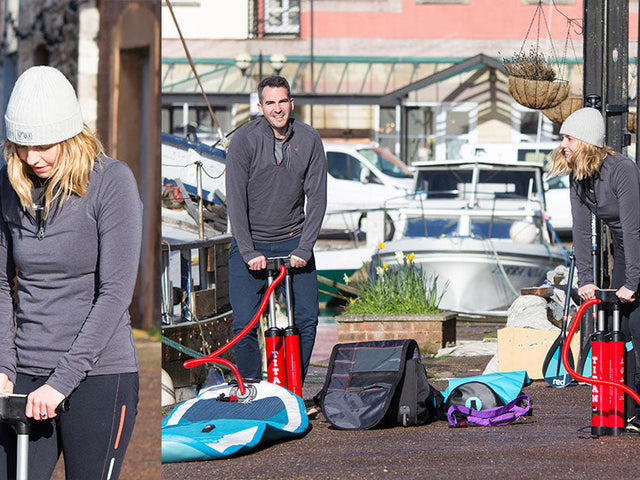
How To: Travel With Your SUP – Taking Your Board Abroad
Paddle Boarding TravelPosted by Lydia Burdett
One of the joys of an inflatable paddleboard is how easy it is to travel with, offering the freedom to explore new waters all around the globe.
Since 2008, Red Paddle Co’s boards have always been designed and produced with travel in mind. And now, our specialist Compact travel range – super-light yet incredibly durable full-sized boards that fold and roll into half-sized backpacks, thanks to our unique MSL®1000 PACT™ technology – are perfect for the job.
But even with the best inflatables on the planet, overseas travel might seem daunting – so here’s our guide on how to travel with your paddle board, including how to plan and pack for a trip abroad with your Red Paddle Co board…
What Is The Best Travel Paddle Board?
Without a doubt, inflatable SUPs are best for travel as they’re so portable, durable and easy to store. Not all inflatables are created equal though, and you definitely want a high-quality board – firstly to survive the rigours of airport, train or coach travel. But then, when you get somewhere warm and sunny, substandard kit (particularly the unreliable production processes and glues that cheaper brands use) is much more likely to fail in hotter temperatures. Fortunately, you can trust that Red Paddle Co’s market-leading MSL® material and Tec Air production process are safely the best.
When deciding what is the best travel paddle board for you, it’s worth researching what conditions are likely to be at your destination and therefore what style of board will be most suitable. For flat water and exploring, you might want a longer, touring style board like a Voyager, Sport+ or 12'0" Compact. If it’s choppier or there’s less potential to explore, take something shorter and more all-round like a Sport, Ride, 11'0" or 9'6" Compact. If there’s surf, the 8'10" Compact is our dedicated surfSUP. Or maybe you’re off to race or train, in which case our new Elites are the fastest iSUPs on the planet.
Other Kit For Paddle Board Travel
Of course, top of the list you’re also going to need a paddle. For travelling convenience, choose from our Red 3-piece paddles – or even better, our most portable paddle is the carbon 5-Piece Collapsible that comes complete with all Compact boards.
Don’t forget your other essentials too: fin(s), leash, and Titan II pump – all included in a Red Paddle Co package and all pack down perfectly into our ATB Transformer or Compact Backpack boardbags. If you’re able to leave your board inflated while you’re away, and want to save a bit of luggage space, it’s worth considering a single-chamber High-Pressure Pump instead and devoting a little more time to that first inflation.
Safety-wise also consider an Airbelt PFD or Buoyancy Aid for paddle board travel. In fact, you will be legally obliged to wear a secondary floatation device on the water in some destinations so make sure you research the local laws and bylaws before you go. If you’re flying with a waistpack, check to see if the CO2 cartridge is on the restricted items list. Many airlines do permit them for lifejackets, but some don’t, in which case you should remove the cartridge and buy a new one when you land.
Insurance For Paddle Board Travel
Whether or not you choose to travel with insurance and/or cover your kit is completely up to you. But if you like to be insured, do check the small print. Most importantly, find out if SUP is explicitly included or excluded from the activities covered on your policy and whether your travel or kit insurance covers your board overseas? You shouldn’t need a particularly specialist policy, some of the most popular mainstream companies include paddleboarding at no extra charge, or you might already be covered via one of your regular home or membership policies. But maybe not, so assume nothing and make sure you know before you go…
Booking Your Trip
Particularly with aircraft travel – potentially trains and coaches too – you just need to know your boardbag dimensions and weight to book it on as hold luggage. As Red boardbags are usually within the size and weight limits for most airlines, you don’t necessarily need to book your board in as ‘sports equipment’ - it could just fly as your regular hold luggage if you can pack enough clothing around it (and into your hand luggage) to last the trip. If you’re booking your board in on top of your regular baggage allowance, then it may work out cheaper to do so as ‘sports equipment’, but unless it’s oversize or overweight you could simply add it as an extra bag if you prefer.
Different airlines each have their own maximum weights and sizes for hold luggage and budget airlines can often have surprising policies. Always check the specifics on the operator’s website before booking.
Packing
With high-quality travel bags such as our ATB Transformer and Compact Backpack, you really needn’t pack your board up any differently to ‘normal’ (assuming you usually include your pump and paddle inside the bag). However, there are a few things you might want to adapt if you’re not sure how to travel with your paddle board – and some handy travel hacks.
Before packing, do make sure you’ve washed everything down to avoid potential cross-contamination of invasive species. Then ensure everything’s as dry as possible, as there’s no point flying water (ie; extra weight!) around the world. That’s all equally important for the trip back home too.
Towels and change robes are great for holidays – and can be really handy for packing too. Especially lightweight ones (like our Microfibre Towel and Quick Dry Change Robes) are brilliant for wrapping around paddles, pump heads, and anything else you want to give a bit of extra padding and protection to. Just watch you don’t exceed your weight limit.
If a couple of you are taking boards, you can sometimes get away with doubling them up into a single bag by laying one on top of the other and rolling together, then checking it in as just one piece of baggage. You may need to move the paddles and/or pump into your other luggage for space and need to be very careful not to outstrip your weight allowance.
Or if it’s just you and your board in an ATB Transformer bag, going somewhere hot, it’s perfectly feasible to pack enough clothing around it that you only need one bag anyway. Again, just watch your total baggage weight.
Plus there’s hand luggage to take extra stuff in when heading off on a paddle board trip. You can get a bit creative here too, by taking a cabin-friendly waterproof bag that you can also use for paddling sessions like our Adventure Waterproof Backpack or even Coolbag Backpack.
Whatever you do, the trick is to measure everything to make sure it’s within your airline’s limits. Then weigh, weigh and weigh again – so invest in some luggage scales so you can really optimise your packing.
Planes, Trains & Automobiles
Once everything’s prepped and packed, actually travelling with your paddle board needn’t be any more difficult than any other trip. You just need to make sure there’s room for your bags in whatever transport you’re using (car, taxi, train, tube, bus, coach etc…)
Then if you’re going by plane, check-in’s usually pretty simple if your board’s going as standard hold luggage – although you might want to allow a bit of extra time if it’s booked as ‘sports equipment’, as even if not oversized you might be directed to a different drop-off for it. While you’re queuing for check-in, make sure you’ve concealed/tightened up all of your straps so they can’t get caught up in baggage carousels.
By checking your airline’s baggage limits, then measuring and weighing everything beforehand, you can avoid any nasty surprises at the airport. Paying excess baggage or frantically repacking at a busy check-in desk really isn’t much fun!
On Arrival At Your Destination
Airport baggage reclaim should be equally straightforward. Although, similarly, it could be that ‘sports equipment’ emerges somewhere other than the main carousel if it was checked in via the oversized baggage system. Just wheel or carry your kit through the airport and onto whatever transfer you need to get to your accommodation. Simple!
And Paddle…
Exploring really is fun on a paddleboard, but don’t just throw yourself straight onto the first bit of water you see! The final step of learning how to travel with your paddle board is to make sure you understand any local risks, the weather, and water conditions, just as you would at home. Plus there could be particular rules and regulations (like no-go zones, or the compulsory use of buoyancy aids) or licences and permits that you’re not used to. Ideally, you’ll have done some online research to find out in advance, but even so, properly look around, read the signs and work things out before you launch. Speaking to other water users is usually a good idea too.
Then, get out there and enjoy…

